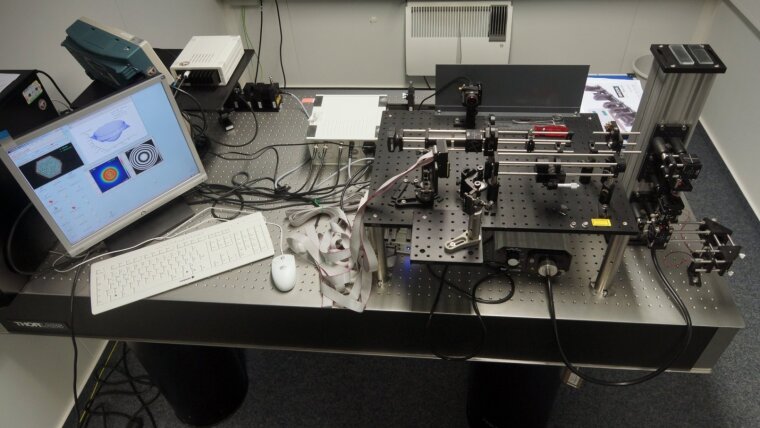
Adaptive optics are widely used in optical systems like telescopes and microscopes for dynamic correction of wavefront distortions. Adaptive optical components have also become important for high-power lasers and beam and pulse shaping as well as compensation of distortion caused by nonlinear processes. The first part of this exercise is to learn how to characterize a beam using a Shack-Hartmann Wavefront Sensor (SHWS) and how to express the deviations of an ideal beam in terms of the Zernike polynomial. In the second part, a Micro-machined Membrane Deformable Mirror (MMDM) is used to correct for various aberrations in a microscope, thus increasing image quality and resolution. A typical setup consists of a deformable membrane mirror (a) and a Shack-Hartmann-wavefront sensor (b). The microscope unit (c) is vertically mounted.
Further content and detailed descriptions are available to enrolled students via the course's page at the Moodle website of the Friedrich Schiller University Jena.